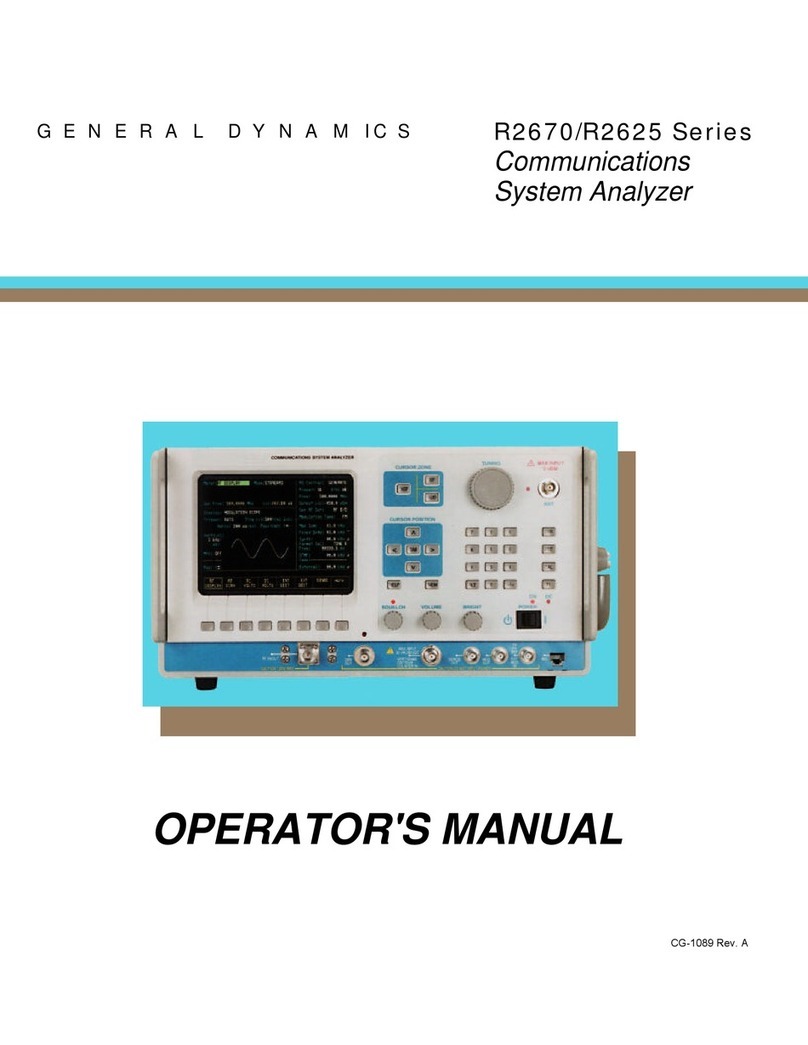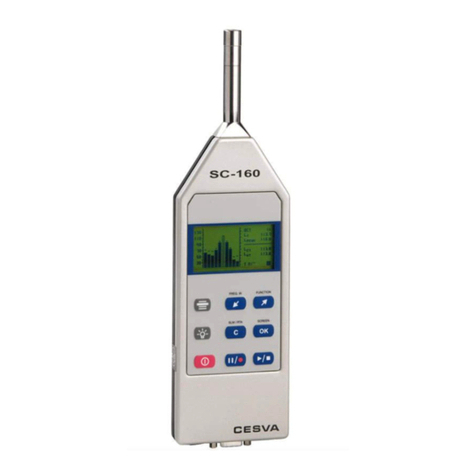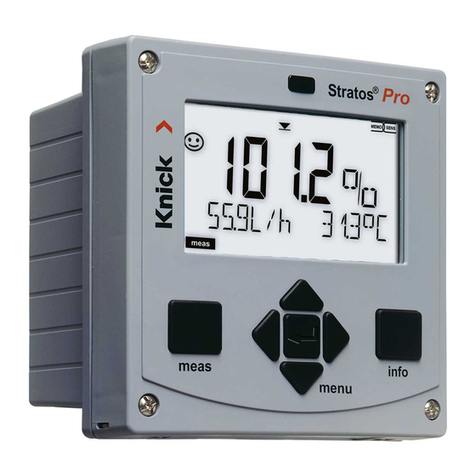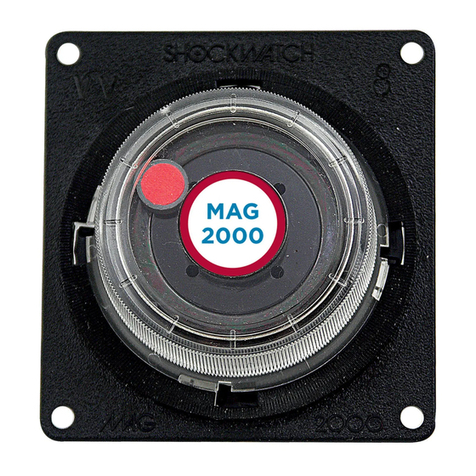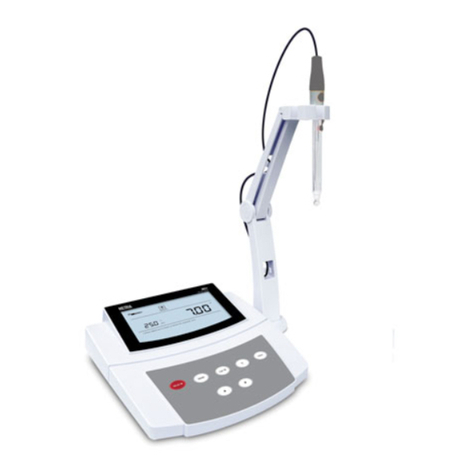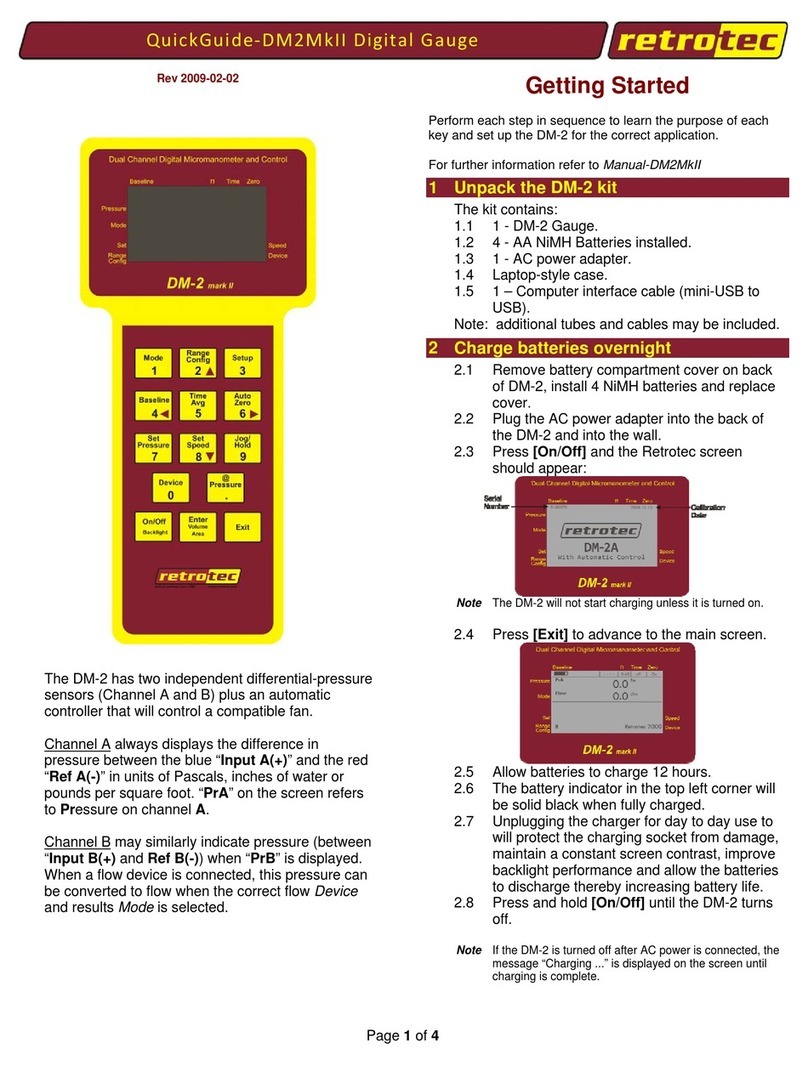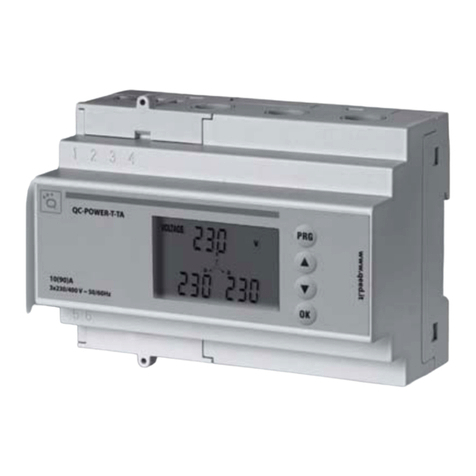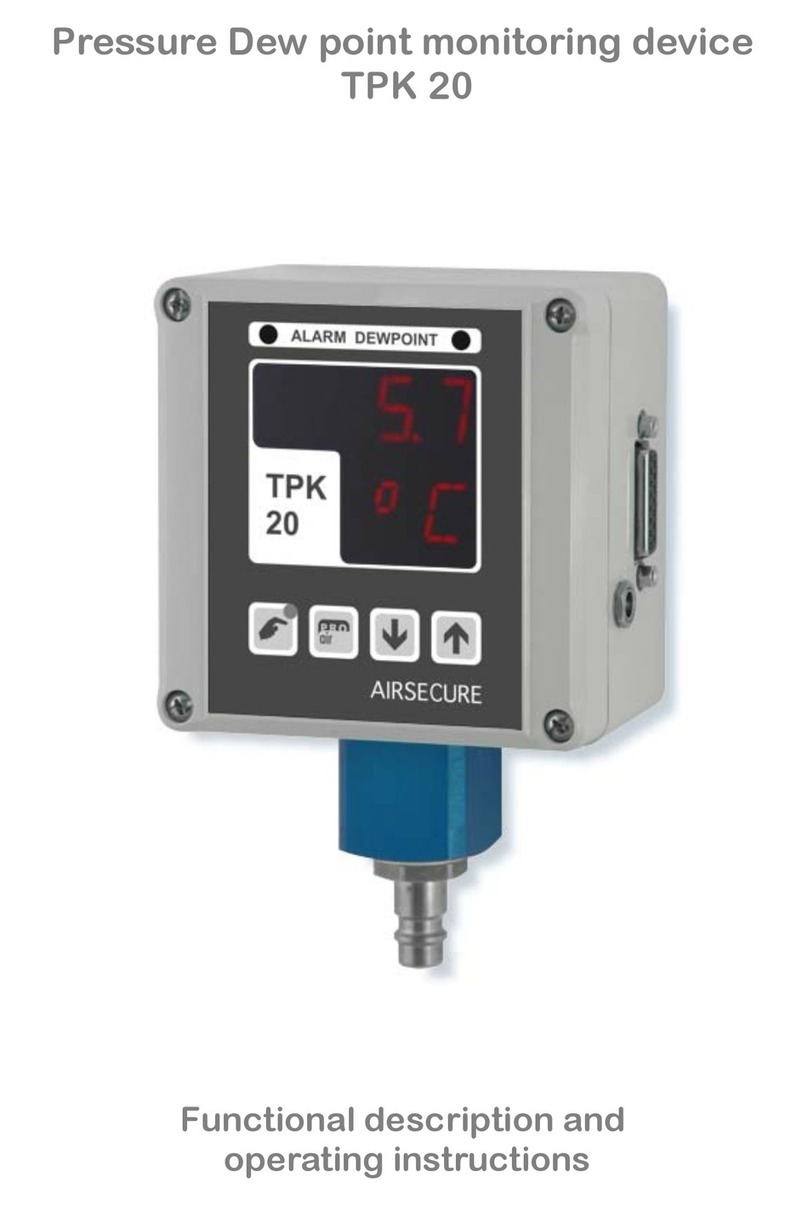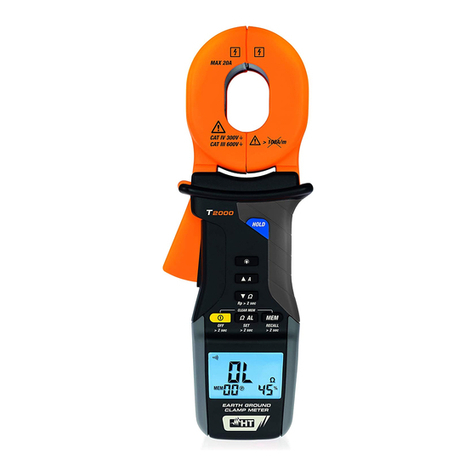General Dynamics R2600 Series User manual

GENERAL DYNAMICS
COMMUNICATIONS TEST EQUIPMENT
R2600 Series
Communications System Analyzer
OPERATOR'S MANUAL
GENERAL DYNAMICS DECISION SYSTEMS
Communications Test Equipment
8201 E. McDowell Rd.
Scottsdale, Arizona
85257
COPYRIGHT 1996 - 2004 GENERAL DYNAMICS
ALL RIGHTS RESERVED
Printed in U.S.A. 68-P30700C001 Rev. J

This Page Intentionally Left Blank

Table of Contents
Topic Page
LIMITED WARRANTY ..........................................................................................................................xiii
SOFTWARE LICENSE AGREEMENT .................................................................................................xiv
SERVICE LOCATIONS........................................................................................................................... xv
Section 1
INTRODUCTION
Topic Page
1-1 SCOPE OF MANUAL ....................................................................................................................................1
1-1 VERWENDUNGSZWECK...........................................................................................................................2
1-2 SAFETY SUMMARY.......................................................................................................................................1
1-2.1 Grounding the Analyzer....................................................................................................................1
1-2.2 Unit is Live When Plugged In ..........................................................................................................1
1-2.3 Keep Away From Live Circuits........................................................................................................1
1-2.4 Explosive Atmosphere ......................................................................................................................3
1-2 SICHERHEITSHINWEISE...........................................................................................................................2
1-2.1 Funkmeßplatz erden ..........................................................................................................................2
1-2.2 Das Gerät steht auch in ausgeschaltetem Zustand unter Spannung...........................................2
1-2.3 Vorsicht vor spannungsführenden Teilen! ..................................................................................... 2
1-2.4 Betrieb in einer explosionsgefährdeten Umgebung ...................................................................... 4
1-3 WARNINGS AND CAUTIONS...................................................................................................................3
1-3.1 Analyzer Operating Voltage..............................................................................................................3
1-3.2 DC Power Source...............................................................................................................................3
1-3.3 Maximum DVM Input Voltages......................................................................................................3
1-3.4 Replacement Fuses.............................................................................................................................5
1-3.5 Other Cautions ...................................................................................................................................7
1-3.6 Replacement and Disposal of Batteries...........................................................................................7
1-3.7 User Maintenance...............................................................................................................................7
iii

Table of Contents (CONT)
Section 1
INTRODUCTION (CONT)
Topic Page
1-3 GEFAHRENHINWEISE...............................................................................................................................4
1-3.1 Betriebsspannung ...............................................................................................................................4
1-3.2 Betrieb mit Gleichspannung .............................................................................................................4
1-3.3 Maximale Eingangsspannung des Digitalvoltmeters..................................................................... 4
1-3.4 Ersatz von Sicherungen.....................................................................................................................6
1-3.5 Sonstige Vorsichtsmaßnahmen ........................................................................................................8
1-3.6 Ersatz und Entsorgung von Akkus .................................................................................................8
1-3.7 Reinigung.............................................................................................................................................8
1-4 SERVICE............................................................................................................................................................7
1-4 KUNDENDIENST..........................................................................................................................................8
1-5 REPLACEMENT PARTS ORDERS............................................................................................................7
1-5 ERSATZTEIL BESTELLUNGEN...............................................................................................................8
1-6 INSTALLATION .............................................................................................................................................7
1-6.1 Packing.................................................................................................................................................7
1-6.2 Initial Set-up ........................................................................................................................................7
1-6.3 Battery Pack Operation .....................................................................................................................9
1-6.4 Battery Pack Installation..................................................................................................................11
1-6 INSTALLATION .............................................................................................................................................8
1-6.1 Verpackung..........................................................................................................................................8
1-6.2 Erste Inbetriebnahme ........................................................................................................................8
1-6.3 Betrieb mit Akkusatz........................................................................................................................10
1-6.4 Installation des Akkusatzes .............................................................................................................12
iv

Table of Contents (CONT)
Section 2
DESCRIPTION
Topic Page
2-1 DESCRIPTION ..............................................................................................................................................13
2-2 OPERATOR CONTROLS...........................................................................................................................13
2-2.1 Keys & Indicators.............................................................................................................................13
2-2.2 Knobs.................................................................................................................................................17
2-2.3 DISPLAY ..........................................................................................................................................17
2-2.4 Connectors ........................................................................................................................................17
2-2.4.1 Front Panel Connectors...................................................................................................17
2-2.4.2 Side Panel Connectors......................................................................................................18
2-2.4.3 Back Panel Connectors ....................................................................................................18
2-3 BOTTOM CONTROLS................................................................................................................................18
v

Table of Contents (CONT)
Section 3
OPERATING INSTRUCTIONS
Topic Page
3-1 GENERAL.......................................................................................................................................................19
3-2 BASIC OPERATION....................................................................................................................................19
3-2.1 Remote Operation............................................................................................................................19
3-2.2 Expanded Display ............................................................................................................................21
3-2.2.1 Spectrum Analyzer, Scope Waveforms or Bargraph Display........................................21
3-2.2.2 Display Tables .......................................................................................................................21
3-2.2.3 Dedicated Keys......................................................................................................................21
3-3 HELP ...............................................................................................................................................................21
3-4 WARNINGS....................................................................................................................................................23
3-5 PRIMARY OPERATING MODES............................................................................................................24
3-5.1 MONITOR Mode............................................................................................................................24
3-5.1.1Phase Modulation...................................................................................................................25
3-5.2 GENERATE Mode.........................................................................................................................26
3-5.3 DUPLEX Mode ...............................................................................................................................28
3-5.4 SWEEP GENERATE Mode.........................................................................................................30
3-5.5 TRACKING GENERATOR Mode (if equipped)....................................................................32
3-6 AUDIO/MODULATION SYNTHESIZER ............................................................................................34
3-6.1 Fixed 1 kHz.......................................................................................................................................34
3-6.2 Synth...................................................................................................................................................34
3-6.3 DTMF ................................................................................................................................................38
3-6.4 External..............................................................................................................................................38
3-7 METER AND DISPLAY..............................................................................................................................38
3-7.1 Meter ..................................................................................................................................................38
3-7.1.1 RF Display..............................................................................................................................38
3-7.1.2 RF Scan...................................................................................................................................40
3-7.1.3 AC/DC Voltmeter................................................................................................................41
3-7.1.4 INT DIST/EXT DIST Meter ............................................................................................43
vi

Table of Contents (CONT)
Section 3
OPERATING INSTRUCTIONS (CONT)
Topic Page
3-7.1.5 SINAD Meter........................................................................................................................43
3-7.1.6 Counter and Decoding Functions ......................................................................................43
3-7.1.7 CABLE FAULT (if equipped)............................................................................................45
3-7.1.8 GENERAL SEQ DECODE..............................................................................................46
3-7.1.9 Preset Scan (if equipped)......................................................................................................47
3-7.2 Display................................................................................................................................................49
3-7.2.1 Spectrum Analyzer................................................................................................................49
3-7.2.2 Modulation Scope .................................................................................................................52
3-7.2.3 EXT'L SCOPE......................................................................................................................55
3-7.2.4 SWEEP GENERATE.........................................................................................................55
3-7.2.5 Bar Graphs.............................................................................................................................55
3-7.2.6 Tracking Generator (if equipped).......................................................................................57
3-8 OTHER FUNCTIONS..................................................................................................................................57
3-8.1 Audio Monitor ..................................................................................................................................57
3-8.2 Calibration .........................................................................................................................................57
3-8.3 Print Function...................................................................................................................................57
3-8.4 Special Functions Menu ..................................................................................................................58
3-8.4.1 Special Function Selection...................................................................................................60
3-8.5 Memory Screens ...............................................................................................................................60
3-8.6 Test Setups (if equipped).................................................................................................................62
vii

Table of Contents (CONT)
Section 4
APPLICATIONS
Topic Page
4-1 BASIC FM TRANSMITTE TESTING ......................................................................................................64
4-1.1 Basic FM Transmitter Testing Setup.............................................................................................65
4-1.2 Transmit Power, Frequency, and Frequency Deviation Measurements .................................65
4-1.3 Modulation Measurements.............................................................................................................66
4-1.4 Off-The-Air Measurements ............................................................................................................68
4-2 BASIC FM RECEIVER TESTING ............................................................................................................69
4-2.1 Basic FM Receiver Testing Setup...................................................................................................70
4-2.2 Receiver Distortion Measurement .................................................................................................71
4-2.3 SINAD Measurement......................................................................................................................71
4-2.4 Modulation Acceptance Bandwidth ..............................................................................................72
4-2.5 Receiver Sensitivity Testing (20 dB Quieting).............................................................................73
4-2.6 Squelch Sensitivity Test ...................................................................................................................74
4-3 CABLE TESTING (if equipped).................................................................................................................76
4-3.1 Overview............................................................................................................................................76
4-3.2 Measuring Fault Distance................................................................................................................76
4-4 TONE REMOTE TESTING.......................................................................................................................79
4-4.1 Tone Remote Testing Setup ...........................................................................................................80
4-4.2 Checking for Proper Tone Remote Operation...........................................................................80
4-5 Analyzer Setup for Printing............................................................................................................................81
viii

APPENDICES
Topic Page
Appendix A
LIST OF ABBREVIATIONS.....................................................................................................................A-1
Appendix B
TONE AND CODE SPECIFICATIONS...............................................................................................B-1
Appendix C
SAFE HANDLING OF CMOS INTEGRATED CIRCUIT DEVICES...........................................C-1
Appendix D
EXTERNAL PORT PIN ASSIGNMENTS........................................................................................... D-1
ix

List of Figures
Page
Figure 1-1. 115 VAC/230 VAC Selection Switch ......................................................................................................9
Abb. 1-1. Spannungswähler für 115 / 220 VAC .....................................................................................................10
Figure 1-2. Battery Pack Installation...........................................................................................................................11
Abb. 1-2. Installation des Akkusatzes ........................................................................................................................12
Figure 2-1. Front Panel Controls, Indicators, and Connectors.............................................................................14
Figure 2-2. Side, Rear, and Bottom Panels...............................................................................................................15
Figure 3-1. Screen Zone Arrangement.......................................................................................................................20
Figure 3-2. System Help ...............................................................................................................................................22
Figure 3-3. RF Overtemperature Warning Message.................................................................................................23
Figure 3-4. Monitor Mode............................................................................................................................................24
Figure 3-5. Phase Modulation .....................................................................................................................................26
Figure 3-6. Generate Mode..........................................................................................................................................26
Figure 3-7. Duplex Mode.............................................................................................................................................28
Figure 3-8. Sweep Generator Mode............................................................................................................................30
Figure 3-9. Tracking Generator Mode .......................................................................................................................32
Figure 3-10. PL Format Selection...............................................................................................................................35
Figure 3-11. General Sequence Mode Select.............................................................................................................37
Figure 3-12. RF Display Zone.....................................................................................................................................39
Figure 3-13. RF Control Zone; Scan Mode...............................................................................................................40
Figure 3-14. Digital Voltmeter Screens ......................................................................................................................42
Figure 3-15. Frequency Counter .................................................................................................................................44
Figure 3-16. Cable Fault Screen .................................................................................................................................45
Figure 3-17. Preset Scan ..............................................................................................................................................47
Figure 3-18. Spectrum Analyzer..................................................................................................................................49
Figure 3-19. Spectrum Analyzer Markers (Option)..................................................................................................51
Figure 3-20. Modulation Scope ...................................................................................................................................52
Figure 3-21. Modulation Scope Markers (Option) ...................................................................................................54
Figure 3-22. Bar Graphs...............................................................................................................................................56
Figure 3-23. Special Functions Menu.........................................................................................................................58
Figure 3-24. Memory Screens.....................................................................................................................................61
x

List of Figures (CONT)
Page
Figure 3-25. Memory Screen with Full Test Setups Option ..................................................................................63
Figure 4-1. Basic FM Transmitter Testing Setup......................................................................................................64
Figure 4-2. Basic FM Receiver Testing Setup ...........................................................................................................69
Figure 4-3. Basic Cable Testing Setup.......................................................................................................................76
Figure 4-4. Tone Remote Testing Setup....................................................................................................................79
Figure D-1. Rear Panel DC Input Port.................................................................................................................D-2
xi

List of Tables
Page
Table 1. Operator Replaceable Fuses...................................................................................................................5
Table 2. Internal Fuses...........................................................................................................................................5
Tabelle 1. Sicherungen, die vom Benutzer gewechselt werden können ............................................................ 6
Tabelle 2. Interne Sicherungen ................................................................................................................................6
Table B-1. Standard DTMF TONES ....................................................................................................................B-1
Table B-2. DTMF Frequency Coding* .................................................................................................................B-1
Table B-3. Private-Line (PL) Codes ......................................................................................................................B-2
Table B-4. 5/6 Tone Paging Tones ......................................................................................................................B-4
Table B-5. DPL Standard Codes ...........................................................................................................................B-4
Table B-6. Select V Frequencies ............................................................................................................................B-5
xii

GENERAL DYNAMICS TEST EQUIPMENT PRODUCTS
LIMITED WARRANTY
(EXCLUDES EXPORT SHIPMENTS)
General Dynamics Test Equipment Products (herein the "product") that are manufactured or distributed by General
Dynamics Communications Test Equipment within General Dynamics Decision Systems (herein General Dynamics)
are warranted by General Dynamics for a period of one (1) year from date of shipment against defects in material and
workmanship. This express limited warranty is extended to the original purchaser (herein the "Licensee") only and
applies only to such defects that: (1) produce repeatable failures resulting in product lock-ups or power downs
rendering the product inoperable, or (2) cause the product to perform outside of General Dynamics-published
specifications.
In the event of such a defect during the period of warranty, the Licensee may return the product, transportation
prepaid, to Motorola Test Equipment Service Center, 2216 Galvin Drive, Elgin Il. 60123. The Licensee must include
written notice specifying the nature of the defect and proof of purchase and evidence of the date of shipment (dated
packing list or invoice). General Dynamics, at its option, will either repair or replace the product. If General Dynamics
elects to repair a defective product by replacing a module or subassembly, General Dynamics, at its option, may
replace such defective module or subassembly with a new or reconditioned replacement. This Limited Warranty is
not extended beyond one year from original date of shipment if General Dynamics repairs a product. Transportation
charges for the return of the product will be paid by General Dynamics.
This Limited Warranty is void if General Dynamics determines:
(1) The product has not been operated in accordance with the procedures in the operating instructions; or
(2) The seals on non-user serviceable components or modules are broken; or
(3) The product has been subject to misuse, abuse, damage, accident, negligence, attempted repair or alteration.
General Dynamics does not warrant that the product will meet Licensee's requirements or that the operation
of the product will be uninterrupted or error free.
No other warrantees, whether express, implied or statutory, including implied warrantees or merchantability
or fitness for particular purpose, are granted to Licensee, or to licensee's transferees, customers, or users of
the product.
In no event shall General Dynamics be liable for any special, incidental, or consequential damages arising
from this agreement or use of the product.
xiii

SOFTWARE LICENSE AGREEMENT
PLEASE READ THIS LICENSE AGREEMENT CAREFULLY BEFORE USING THE SOFTWARE. BY USING THE
SOFTWARE, YOU AGREE TO THE TERMS OF THIS LICENSE. IF YOU DO NOT AGREE, PROMPTLY RETURN
THE HARDWARE AND SOFTWARE FOR A REFUND.
1. LICENSE GRANT: Subject to acceptance of these terms, General Dynamics Decision Systems, Inc. grants to End
User (LICENSEE) a non-exclusive license to use this software (SOFTWARE) and documentation with the accompanying
hardware.
2. OWNERSHIP: This is not a sale of the software. General Dynamics Decision Systems, Inc. and or its licensors retain
ownership of the software including all patent, copyrights, and other intellectual property rights.
LICENSEE may transfer the original SOFTWARE and DOCUMENTATION to another with the sale of the Test Set so long as
the customer agrees in writing to be bound by the terms of this agreement and Licensee provides a copy to Licensor.
LICENSEE agrees not to copy, decompile, disassemble, reverse engineer, modify, rent, lease, or create derivative works of
SOFTWARE. SOFTWARE may not be transmitted electronically or accessed over a network.
LICENSEE agrees that it will not in any form, export, re-export, resell, ship, or divert or cause to be exported, re-exported,
resold, shipped, or diverted, directly or indirectly, the SOFTWARE and DOCUMENTATION to any country where the United
States or LICENSEE'S government or any agency thereof at the time of export or re-export requires an export license or other
government approval without first obtaining such license or approval.
3. SCOPE OF USE: Licensee may only use this SOFTWARE on the Test Equipment in which it is embedded.
This license will terminate automatically if LICENSEE fails to comply with any term of the license.
4. LIMITED WARRANTY: General Dynamics Decision Systems warrants that under normal use, SOFTWARE and
hardware shall perform the functions specified in its DOCUMENTATION. If SOFTWARE does not conform to its
DOCUMENTATION such that its functional performance is significantly affected and LICENSOR is notified in writing within
ninety (90) days from the date of purchase along with a copy of the receipt of purchase, General Dynamics Decision Systems
shall have the option of refunding the purchase price or replacing the SOFTWARE as LICENSEE’S exclusive remedy.
5. LIABILITY: THIS WARRANTY IS EXCLUSIVE AND IN LIEU OF ALL OTHER WARRANTIES WHETHER
STATUTORY, EXPRESS, OR IMPLIED (INCLUDING ALL WARRANTIES OF MERCHANTABILITY AND FITNESS FOR A
PARTICULAR PURPOSE). NEITHER OR ITS LICENSOR (S) SHALL BE LIABLE FOR INCIDENTAL, SPECIAL OR
CONSEQUENTIAL DAMAGES.
6. By using the SOFTWARE, LICENSEE acknowledges that this agreement has been read and understood and agrees
to be bound by its terms and conditions. LICENSEE FURTHER AGREES THAT THIS AGREEMENT CONSTITUTES THE
ENTIRE UNDERSTANDING OF LICENSEE AND GENERAL DYNAMICS DECISION SYSTEMS WITH RESPECT TO THE
SUBJECT MATTER HEREOF AND COMPLETELY SUPERSEDES ANY PRIOR UNDERSTANDING, EITHER ORAL OR
WRITTEN. ANY MODIFICATION OF THIS AGREEMENT SHALL BE MADE ONLY BY MUTUAL AGREEMENT AND
EVIDENCED BY WRITTEN AMENDMENT SIGNED BY BOTH PARITIES. This agreement shall be governed and interpreted
by the laws of the State of Arizona.
7. U.S. GOVERNMENT: LICENSOR represents that the Software is either Commercial Computer Software as defined
under DFARS 252.227-7014 (June 1995), or non-commercial computer software developed at private expense. If this license
is acquired under a U.S. Government civilian agency contract, the Government's rights to use, modify, reproduce, release,
perform, display or disclose the SOFTWARE are subject to restrictions set forth in FAR 52.227-19. If this license is acquired
under a U.S. Government Department of Defense contract, the Government's rights to use, modify, reproduce, release,
perform, display or disclose the SOFTWARE are subject to this license agreement. The License Fees identified in Exhibit A
and the restrictions set forth in either FAR 52.227-19 or this license agreement do not apply to portions of the Software, if any,
in which the U.S. Government has acquired Unlimited Rights.
Copyright © 2001, General Dynamics Decision Systems, Inc.
All Rights Reserved.
This product contains silicon software designed by Ready Systems Corp. 1989 Ready Systems Corp. All rights reserved.
Unpublished-rights reserved under the copyright laws of the United States.
RESTRICTED RIGHTS LEGEND
Motorola, Private-Line, and Digital Private-Line are trademarks of Motorola, Inc.
DVP,DVP-XL,DVI-XL,DES-XL AND ASTRO are trademarks of Motorola Inc.
VRTX, RSC, Ready Systems Corp. are trademarks of Ready Systems Corporation.
xiv

SERVICE LOCATIONS
USA
Motorola Test Equipment Service Center
2216 Galvin Drive
Elgin Il. 60123
Ph: 800-323-6967
847-783-2952
FAX: 847-783-2955
CANADA
Motorola Canada Limited
Toronto Support Center
3900 Victoria Park Avenue
North York, Ontario M2H3H7
Canada
Ph: 800-543-3222
Fax: 888-331-9872
JAPAN
Seibu-Unyu Building 6F
3-14-2 Tatsumi Koto-Ku
Tokyo, Japan 35-0053
Ph: 81-3-3521-8262
FAX: 81-3-3521-8371
LATIN AMERICA
Motorola de Mexico
Blvd. Manuel Avila Camacho #32
Col. Lomas de Chapultepec
C.P. 11000 Del Miguel Hidalgo
D.F. Mexico 06700
Ph: 525-387-0539
Fax: 525-387-0593
ISRAEL
Motorola Israel
3 Kremenetski Street
Tel Aviv, Israel
Ph: 972-356-581-45
Fax: 972-356-250-23
HONG KONG
Motorola Asia Pacific Limited
HK Regional Support Centre
Unit 10, 18/F, Kodak House II
39 Healthy Street East
North Point, Hong Kong
Ph: 852-2590-4800
Fax: 852-2590-7950
SINGAPORE
Motorola Electronics Pte Ltd.
10 Ang Mo Kio Street 65
#01-01 Tech Point Building
Singapore, 569059
Ph: 65-4867199
Fax: 65-4846123
AUSTRALIA
473-479 Swan Street
Richmond, Victoria 3121
Melbourne, Australia
Ph:61-3-9425-3533
Fax: 61-3- 9425-3530
EUROPE. MIDDLE EAST, AFRICA
Motorola GMBH
Heinrich-Hertz-Str. 1
D-65232 Taunusstein, Germany
Ph:49-6128-702130
KOREA
Motorola Electronics Communications Inc.
1st Floor, Iidong Bldg., #968-5
Daechi dong, Kangnam-Ku
Seoul Korea 135-280
Ph: 82-2-3420-6402
FAX: 82-2-3420-6401
PUERTO RICO
Motorola De Puerto Rico
2 Chardon Ave
El Mundo Bldg.
Hato Rey, PR 00917
Ph: 787-273-2400 Ext 219
Fax: 787-782-3685
CHINA
Motorola China Electronics LTD
Motorola Innovation Center
39A, Zizhu Yuan Road
Haidian District
Beijing PRC 100081
PH: 86-10-6843-722 Ext 3369
FAX: 86-10-6438-19
xv

This Page Intentionally Left Blank
xxxvi

Section 1
INTRODUCTION
1-1 SCOPE OF MANUAL
This manual contains information for using the
R2600 Series Communications System Analyzers.
These Analyzers incorporate many devices and
functions, permitting a technician to completely
monitor and service radio communications
equipment in the shop and in the field.
1-2 SAFETY SUMMARY
The following general safety precautions must be
observed during all phases of operation, service
and repair of this equipment. Failure to comply
with these precautions or warnings violates safety
standards of design, manufacture, and intended
use of the equipment. General Dynamics.
assumes no liability for the customer's failure to
comply with these requirements.
The safety precautions and warnings listed below
represent warnings of certain dangers of which
General Dynamics is aware. You as the user of
the product, should follow these warnings and all
other safety precautions necessary for the safe
operation of the equipment in your operating
environment.
1-2.1 Grounding the Analyzer
To minimize shock hazard, the Analyzer
enclosure must be connected to an electrical
ground. This ground connection is provided via a
three wire AC power cable. The power cable
must be plugged into an approved three-contact
electrical outlet. If the unit is not properly
grounded while operating from an AC power
source, the voltage potential between it and
ground may cause an electrical shock.
1-2.2 Unit is Live When Plugged In
Internal circuits are live when the power cable is
plugged in, although the front panel switch is in
the STANDBY position. The input power plug is
the disconnect device.
1-2.3 Keep Away From Live Circuits
Operating personnel must not remove equipment
covers. Only Factory Authorized Service
Personnel or other qualified maintenance
personnel may remove equipment covers for
internal subassembly or component replacement
or any internal adjustment. Disconnect Analyzer
from all voltage sources before removing covers
for adjustments, maintenance or repairs.
Capacitors inside may still be charged even if the
Analyzer is disconnected from the voltage
source.
1

Kapitel 1
EINFÜHRUNG
1-1 VERWENDUNGSZWECK
Dieses Handbuch enthält Informationen über den
Umgang mit den Funkmeßplätzen der Serie
R2600. Diese Geräte enthalten eine Vielzahl von
Bausteinen und Funktionen, mit deren Hilfe der
Techniker Kommunikationsgeräte sowohl in der
Werkstatt als auch vor Ort vollständig überprüfen
und warten kann.
1-2 SICHERHEITSHINWEISE
Die nachfolgenden allgemeinen
Sicherheitshinweise sind während aller Phasen
der Bedienung, Wartung und Reparatur dieses
Gerätes zu befolgen. Die Nichtbeachtung dieser
Hinweise bzw. Warnungen stellt ein Verstoß
gegen die Sicherheitsstandards der Entwicklung,
Herstellung und des bestimmungsgemäßen
Gebrauchs des Gerätes dar. General Dynamics
lehnt jede Haftung für die Nichtbeachtung dieser
Vorschriften seitens des Kunden ab.
Die nachstehenden Sicherheits- und
Gefahrenhinweise warnen vor bestimmten von
General Dynamics erkannten Gefahren. Sie als
der Benutzer des Produktes sollten diese
Warnhinweise und sonstige sicherheitstechnische
Vorsichtsmaßnahmen beachten, um einen
zuverlässigen Betrieb des Gerätes innerhalb einer
sicheren Betriebsumgebung zu gewährleisten.
1-2.1 Funkmeßplatz erden
Zur Verringerung der Gefahr eines elektrischen
Schlages muß das Gerät elektrisch geerdet
werden. Die Sicherheitserdung erfolgt über das
dreiadrige Netzkabel. Der Netzstecker muß dazu
in eine dreipolige Steckdose eines zugelassenen
Typs gesteckt werden. Wird das Gerät beim
Betrieb aus einer Wechselstromquelle nicht
vorschriftsmäßig geerdet, so kann die
Differenzspannung zwischen Gerät und Erde
einen elektrischen Schlag hervorrufen.
1-2.2 Das Gerät steht auch in ausgeschaltetem
Zustand unter Spannung
Die Schaltungen im Geräteinneren stehen bei
gestecktem Netzkabel immer unter Spannung,
auch wenn der Schalter auf der Frontplatte sich in
Stellung STANDBY befindet. Eine vollständige
Trennung vom Netz bewirkt nur das Ziehen des
Netzsteckers.
1-2.3 Vorsicht vor spannungsführenden
Teilen!
Das Betriebspersonal darf die Gehäuse-
Abdeckungen nicht öffnen. Nur vom Werk
autorisierte Techniker und sonstiges qualifiziertes
Personal dürfen die Geräte-Abdeckungen öffnen,
um Teile zusammenzubauen bzw. zu ersetzen
oder Einstellungen vorzunehmen. Vor dem
Öffnen, muß das Gerät von allen
Spannungsquellen getrennt werden, damit
Einstell-, Wartungs- und Reparaturarbeiten in
spannungslosem Zustand durchgeführt werden.
Kondensatoren im Gerät können auch nach der
Trennung des Gerätes von der Spannungsquelle
noch geladen sein.
2

1-2.4 Explosive Atmosphere
Do not operate the equipment in the presence of
flammable gases or fumes. Operation of any
electrical equipment in such an environment
constitutes a definite safety hazard.
1-3 WARNINGS AND CAUTIONS
You should observe several precautions when
handling this equipment.
WARNING
The Analyzer is designed to be operated
with a ground connection to the chassis via
a three-wire power connection. If the unit is
not properly grounded while operating from
an AC power source, the voltage potential
between it and ground may cause an electri-
cal shock.
CAUTION
This equipment contains parts that are
subject to damage by static electricity.
While there is normally no need for op-
erator access to any internal components,
take proper precautions in handling should
the need arise. Refer to Appendix C for safe
handling procedures.
1-3.1 Analyzer Operating Voltage
Before plugging in an AC power cable, verify
that the selector switch located on the underside
of the unit is set to the correct operating
voltage. If using a battery pack, the cover must
be removed and the internal voltage selector
switch set to the correct position.
1-3.2 DC Power Source
The DC power input is intended to be
connected to the Battery Pack accessory, or
from a vehicle battery. Connecting the
Analyzer DC input to a Power Supply can, in
the event of a power supply fault, cause
hazardous voltages to be present on the low
voltage circuits of the Analyzer.
1-3.3 Maximum DVM Input Voltages
To ensure the safety of the user, the voltages
being measured at the DVM input must be kept
below Hazardous Live limits. The maximum
input levels are: 30 V r.m.s and 42.4 V peak or
60 V d.c.
3

1-2.4 Betrieb in einer explosionsgefährdeten
Umgebung
Das Gerät darf in einer explosionsgefährdeten
Umgebung nicht betrieben werden. Brennbare
Gase oder Dämpfe in der Nähe des Gerätes
stellen ein großes Sicherheitsrisiko dar.
1-3 GEFAHRENHINWEISE
Beim Umgang mit dem Gerät sind folgende
Gefahrenhinweise zu beachten.
VORSICHT!
Beim Betrieb des Funkmeßplatzes muß das
Chassis über ein dreipoliges Netzkabel
geerdet sein. Wird das Gerät bei Speisung aus
einer Wechselstromquelle nicht
vorschriftsmäßig geerdet, so kann die
Differenzspannung zwischen Gerät und Erde
einen elektrischen Schlag hervorrufen.
ACHTUNG!
Dieses Gerät enthält Bauteile, die durch
statische Elektrizität beschädigt werden
können. Normalerweise ist ein Zugriff auf die
Bauteile im Inneren des Gerätes zwar nicht
erforderlich, jedoch sind im Bedarfsfall die
nötigen Vorsichtsmaßnahmen zu beachten.
Einzelheiten dazu gehen aus Anhang C
hervor.
1-3.1 Betriebsspannung
Vor dem Anschluß des Funkmeßplatzes an das
Netz ist sicherzustellen, daß am
Spannungswähler auf der Unterseite des Gerätes
die richtige Netzspannung eingestellt ist. Bei
Verwendung eines Akkusatzes muß die
Abdeckung abgenommen und der interne
Spannungswähler in die richtige Stellung
gebracht werden.
1-3.2 Betrieb mit Gleichspannung
Über den Eingang DC POWER läßt sich der
Funkmeßplatz mit Spannung aus dem als Option
erhältlichen Akkusatz oder auch aus einem Kfz-
Bordnetz speisen. Der Anschluß einer externen
Stromversorgung kann im Falle eines Fehlers in
dieser Stromversorgung dazu führen, daß die
Niederspannungsteile im Funkmeßplatz
gefährlich hohe Spannungen annehmen.
1-3.3 Maximale Eingangsspannung des
Digitalvoltmeters
Damit die Sicherheit des Benutzers gewährleistet
ist, dürfen die Spannungen am Eingang des
Digitalvoltmeters bestimmte Werte nicht
überschreiten. Die maximal zulässige Werte sind:
30 V eff. und 42,4 V Spitzenspannung oder 60 V
Gleichspannung.
4
Other manuals for R2600 Series
1
Table of contents
Other General Dynamics Measuring Instrument manuals
Popular Measuring Instrument manuals by other brands
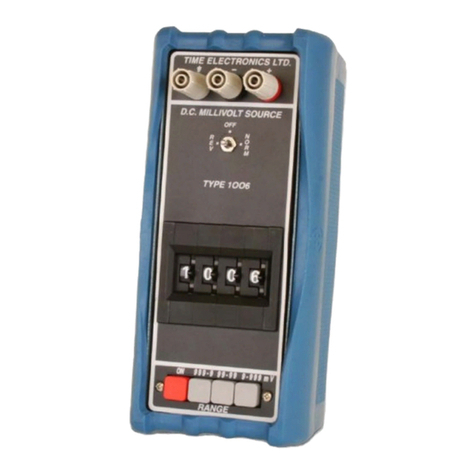
Time Electronics
Time Electronics 1006 user manual
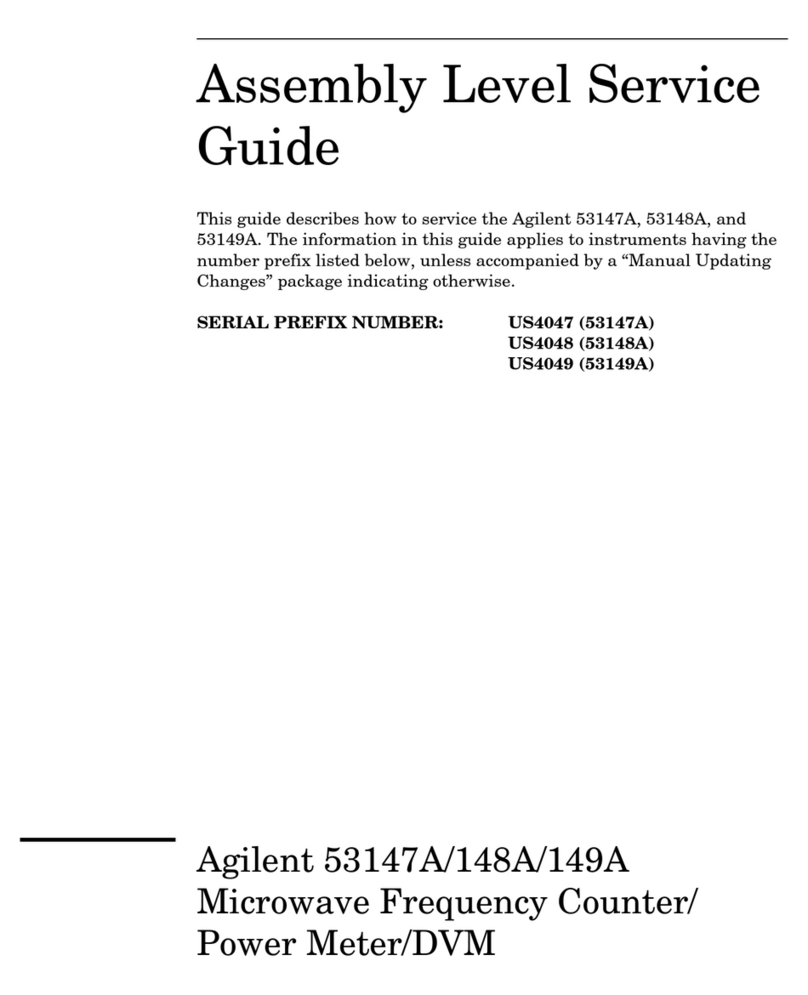
Agilent Technologies
Agilent Technologies 53147A Assembly Level Service Guide
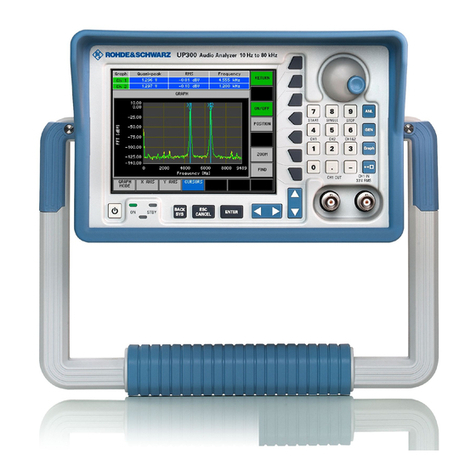
Rohde & Schwarz
Rohde & Schwarz Smart Instruments UP300 operating manual
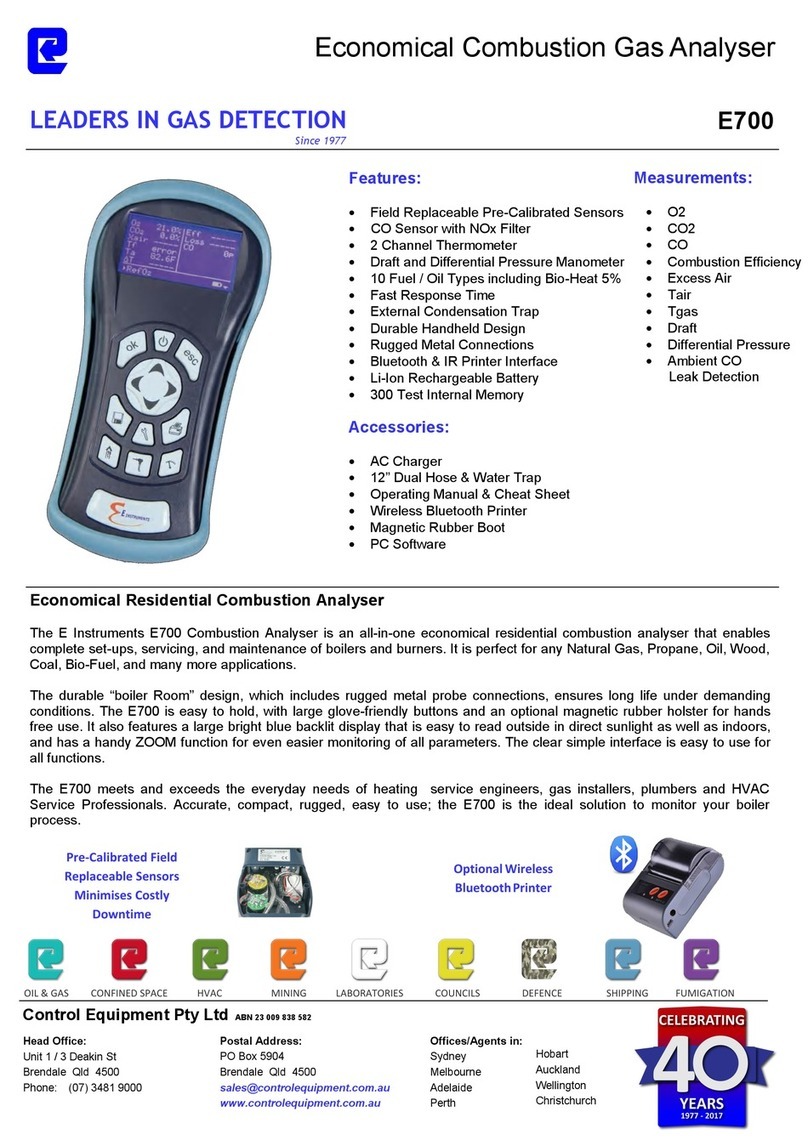
Control Equipment
Control Equipment E700 manual
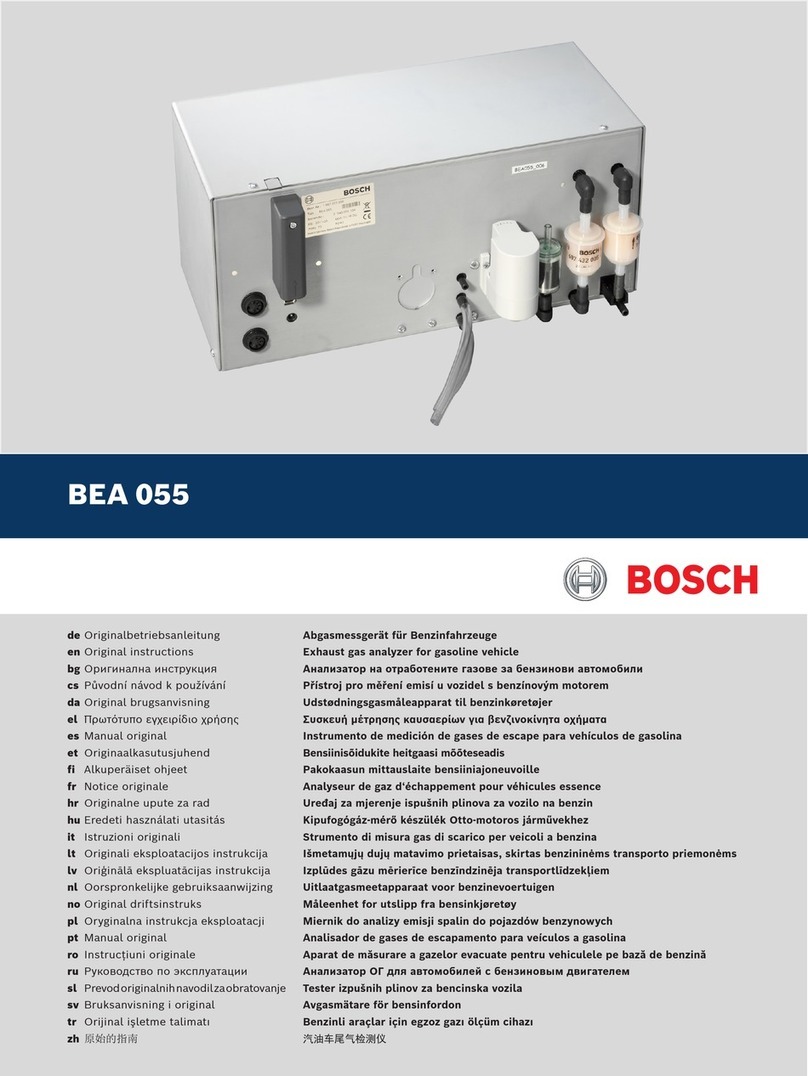
Bosch
Bosch BEA 055 Original instructions
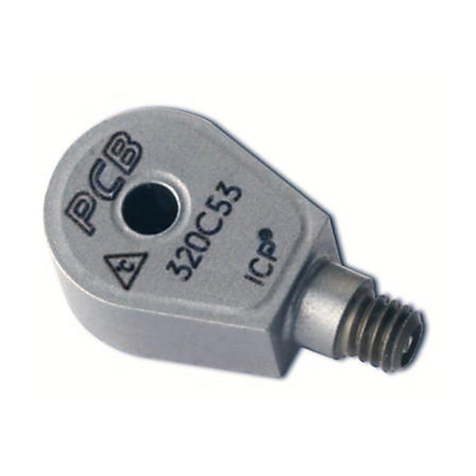
PCB Piezotronics
PCB Piezotronics 320C53 Installation and operating manual
